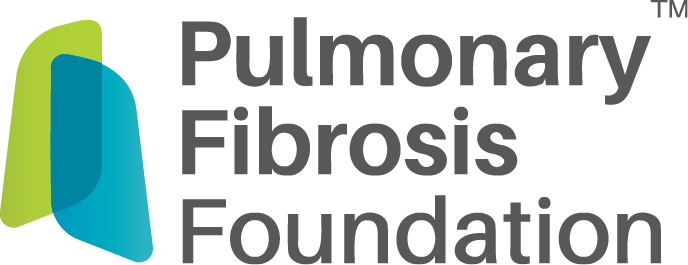Lung Transplantation
What is lung transplantation?
Lung transplant—surgery to remove a damaged or diseased lung and replace it with a healthy lung from a deceased donor—is a life-saving treatment for people with late-stage lung disease after other treatments have been exhausted. Studies demonstrate that lung transplantation is associated with a significant improvement in quality of life. Pulmonary fibrosis (PF) is one of the diseases for which lung transplant is an option; some of the others include chronic obstructive
pulmonary disease (COPD), cystic fibrosis, pulmonary arterial hypertension, and sarcoidosis.
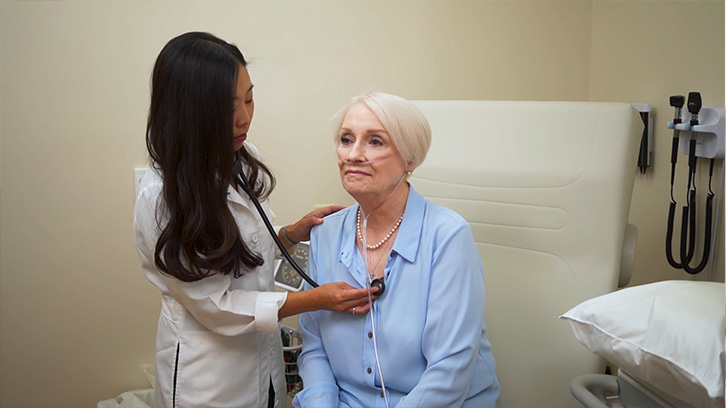
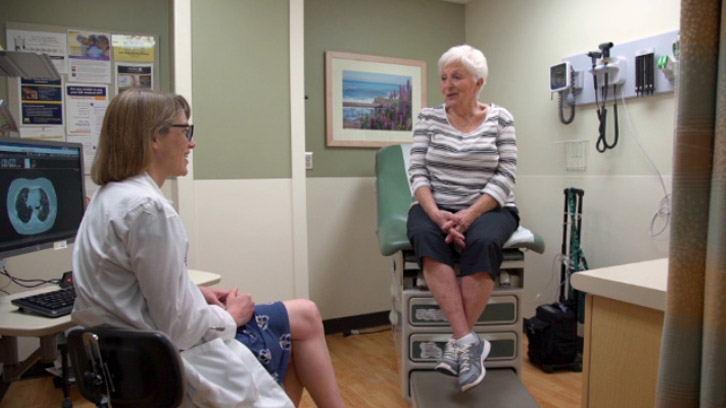
Receiving a Referral
A referral for a unilateral (single) or bilateral (double) lung transplant will come from your primary care physician or pulmonologist (lung doctor). Transplants are a specialized type of surgery performed at a limited number of medical centers across the country, often referred to as transplant centers. If lung transplantation is thought to be appropriate for your care, your physician will discuss this with you and refer you to one or more of these centers. Referral and transplantation criteria can vary by transplant center.
The window for referral is important. While lung transplants are designed to address late-stage lung disease, referral should happen early. Early referral helps patients prepare physically and mentally for transplantation, maximizing their ability to recover smoothly. It also assures all necessary medical tests are completed when patients have enough physical reserve to undergo rigorous testing.
Although your doctor will refer you to a specific transplant center, you may also select a center on your own. When evaluating a transplant center, check with your health insurance provider to verify which centers are covered under your plan.
Preparing for Evaluation
Before you go in for your medical evaluation, there are several steps you should take to ensure you’re in the best possible position to be accepted as a transplant candidate:
- Demonstrate compliance. For you to be an optimal candidate for lung transplantation, all your other organ systems have to be functioning adequately. Your transplant team will want to see a habit of compliance with your medical care. Make sure your physicals, vaccinations, and dental care are up to date. If you have comorbidities (other diseases in addition to your lung disease), take your medications as prescribed, keep follow-up healthcare appointments, and follow any recommended medical diets.
- Exercise. Transplant centers require a minimum level of endurance, which can take time to build up. Get started on your plan now. If oxygen needs or access issues prevent you from enrolling in exercise programs at a gym, ask your healthcare provider if a referral for pulmonary rehabilitation is available to you. Always talk with your provider before beginning a new exercise routine.
- Meet weight requirements. Studies demonstrate that outcomes are better when patients are at an ideal weight. All transplant centers have a minimum and maximum body mass index (BMI) for transplant. Maximum BMI criteria vary per center, but are usually 30-35. If you need to lose weight, focus on portion control and increasing your activity level. Ask your healthcare provider for referrals to a medical weight loss clinic or dietitian consultation.
- Stay substance-free and tobacco-free. You must not use narcotics, THC, illicit drugs, or alcohol. You also must be tobacco-free (usually for at least six months) to begin a transplant evaluation. This includes nicotine replacement therapies like patches, gum, and vaping. The transplant team may test your blood at any time during the evaluation process.
- Have a strong support system. Most centers require patients to identify two to three caregivers who can provide combined continual support during the pre- and post-transplant period. Caregivers may be family members, friends, and neighbors, as long as they can drive and are willing to learn to help care for a transplant patient.
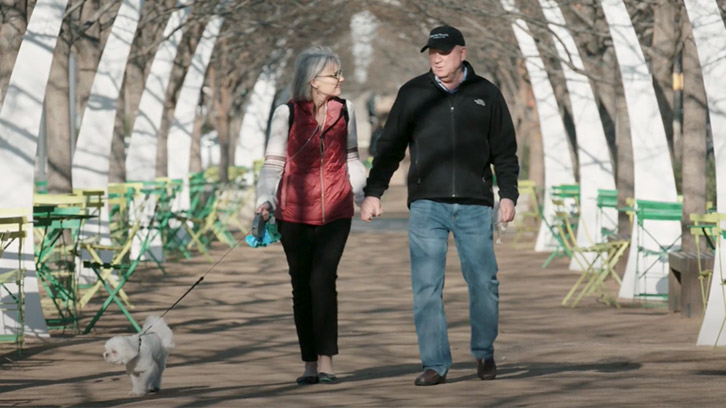

Evaluation for Lung Transplant
Because lung transplant is a major procedure, the medical evaluation process is lengthy and complex. You’ll meet with members of a team including a transplant pulmonologist, transplant surgeon, nurse coordinator, psychologist, social worker, physical
therapist, finance coordinator, and others during several visits that extend over weeks or months.
Transplant centers want to ensure that the candidates they select will benefit from transplantation and have good long-term outcomes.
The evaluation starts with assessing your pulmonary health to ensure that you’re sick enough to warrant transplantation. The evaluation also ensures that other organ systems such as your heart, kidney, and liver are healthy enough to tolerate
surgery and post-transplant medical therapies. The evaluation team will also consider psychological health, your family and social support, motivation, and financial circumstances. You’ll take numerous tests, which you can read about in Preparing for a Lung Transplant.
The Waiting List
A Lung Allocation Score (LAS) is given to each patient who is added to the waiting list. The LAS directs donated organs to the people who will most benefit from a transplant. This calculation tries to predict the likelihood of survival in the next year without a lung transplant, and the likelihood of survival one year following lung transplantation. Some of the factors used in calculating the score are your age, oxygen requirement, pulmonary function test results, distance walked in six minutes, and type of lung disease you have. If some of these factors change while you’re on the waiting list, your transplant team will update your LAS.
When patients are placed on the waiting list, they’re registered in a centralized, national computer network that links all donors and transplant candidates. When donor organs are identified, the computer matching program immediately generates a list of potential recipients ranked according to objective criteria like blood type, medical urgency, time on the waiting list, and distance between donor and recipient. Other factors that are considered include donor height and antibodies, which could influence organ compatibility. Ethnicity, gender, religion, and financial status are not part of the computer matching system. Once the transplant surgeon for a matched recipient approves the lung, it’s transported to the recipient’s hospital at the same time the patient is being prepared for surgery.
The average time on the waiting list for patients with idiopathic pulmonary fibrosis (IPF) is three to six months, but an individual patient’s wait time is dependent on how advanced the disease is at the time of listing. It’s not possible to predict how long a patient will wait before a compatible lung becomes available. Some patients wait a few days; other times, the wait is many years, depending on the LAS. It may take longer to find a suitable match if:
- your blood type is less common
- you are very tall or very short
- you have high levels of antibodies against tissues received from others (due to a history of pregnancy, blood transfusions, or prior transplantation)
Lungs must be transplanted soon after donation, so timing is critical. Because you may receive the call at any time day or night, you and your support person must be ready at a moment’s notice to leave for your transplant center.
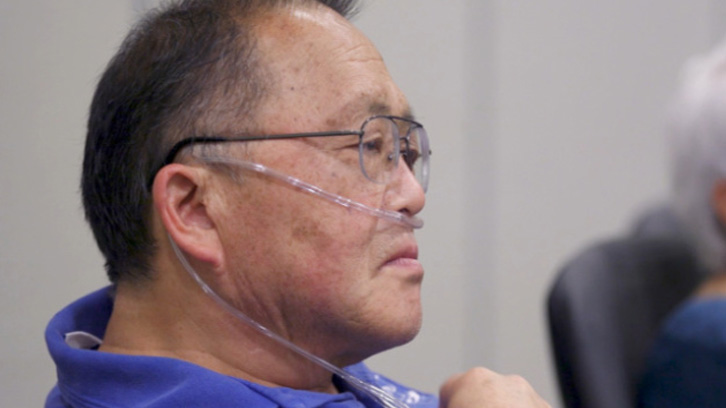
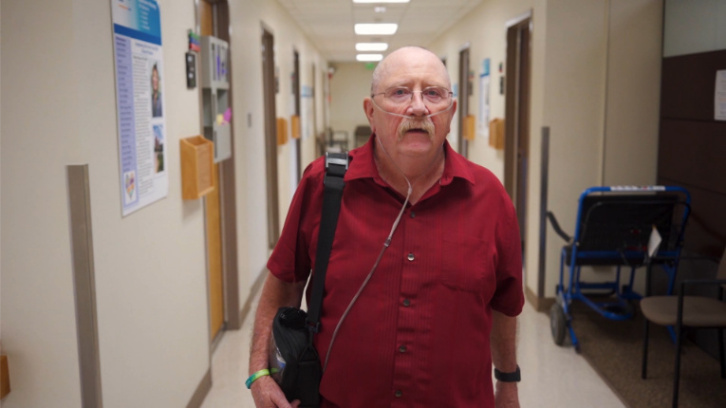
Transplant Surgery
While you’re being prepared for the procedure, your transplant team is in close contact to ensure that the donor lung is right for you. If it’s not compatible, the surgery will be canceled. If the donor lung is a match, you’ll be taken to the operating room. The anesthesiologist will give you medicines to ensure you’re unconscious and don’t feel pain throughout the procedure.
A single-lung transplant surgery usually takes four to six hours; a double-lung transplant typically requires eight to 12 hours.
The Recovery Process
After the surgery, you’ll be cared for in the intensive care unit (ICU). Once you’ve left the hospital, your early recovery process continues at home. You should have at least two caregivers available so that someone can be with you 24 hours
a day for the first several months after surgery.
In the early stages of recuperation, you should carefully avoid crowds and anyone who is sick. Your transplant team may also ask you to wear a mask when you leave the house. It’s best
to restrict visitors to your home while you’re recovering. Frequent hand washing is an important way to prevent the spread of infection.
The two major issues facing transplant patients after surgery are rejection and infection. Because
your risk of rejection or infection is highest in the first few months after surgery, you’ll need to remain close to your transplant center for a period of time defined by your transplant team-often two to three months.
You’ll
need a lot of help as you recover from surgery. Although patients are encouraged to take on as much care for themselves as is appropriate, your caregivers are there to support you.
You can read about recovering from lung transplant surgery in Life After Lung Transplant.

Transplant Outcomes
Educational Materials
Find reliable information and trusted resources that can help you learn about pulmonary fibrosis and live better with PF.
-
View Full Details
Pulmonary Fibrosis Information Guide
Our comprehensive guide provides reliable information about pulmonary fibrosis, the diagnostic process, treatment options, and more. -
View Full Details
Preparing for a Lung Transplant
Learning about and preparing for lung transplant can be an overwhelming process. This booklet is designed to help PF patients considering lung transplant learn what’s involved and how to get started. -
View Full Details
Life After Lung Transplant
Life after a transplant has its own challenges. To maintain the best possible health and reduce the chance of complications, you’ll need to carefully follow your care team’s instructions throughout your life. This booklet provides an overview of what to expect.
